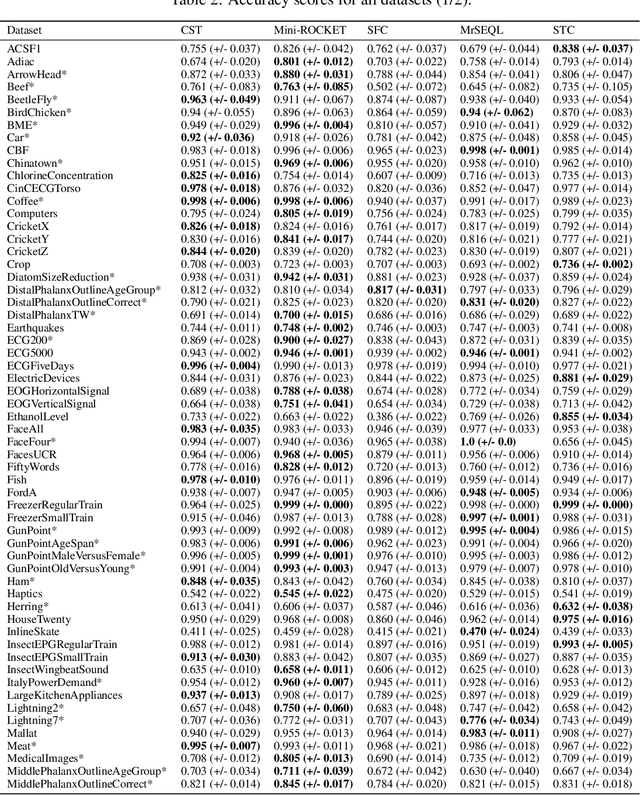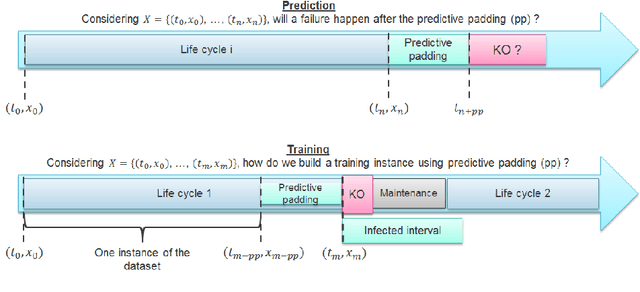Elloumi Wael
Convolutional Shapelet Transform: A new approach for time series shapelets
Sep 28, 2021



Abstract:Shapelet-based algorithms are widely used for time series classification because of their ease of interpretation, but they are currently outperformed, notably by methods using convolutional kernels, capable of reaching state-of-the-art performance while being highly scalable. We present a new formulation of time series shapelets including the notion of dilation, and a shapelet extraction method based on convolutional kernels, which is able to target the discriminant information identified by convolutional kernels. Experiments performed on 108 datasets show that our method improves on the state-of-the-art for shapelet algorithms, and we show that it can be used to interpret results from convolutional kernels.
Time series classification for predictive maintenance on event logs
Nov 24, 2020



Abstract:Time series classification (TSC) gained a lot of attention in the past decade and number of methods for representing and classifying time series have been proposed. Nowadays, methods based on convolutional networks and ensemble techniques represent the state of the art for time series classification. Techniques transforming time series to image or text also provide reliable ways to extract meaningful features or representations of time series. We compare the state-of-the-art representation and classification methods on a specific application, that is predictive maintenance from sequences of event logs. The contributions of this paper are twofold: introducing a new data set for predictive maintenance on automated teller machines (ATMs) log data and comparing the performance of different representation methods for predicting the occurrence of a breakdown. The problem is difficult since unlike the classic case of predictive maintenance via signals from sensors, we have sequences of discrete event logs occurring at any time and the lengths of the sequences, corresponding to life cycles, vary a lot.
 Add to Chrome
Add to Chrome Add to Firefox
Add to Firefox Add to Edge
Add to Edge